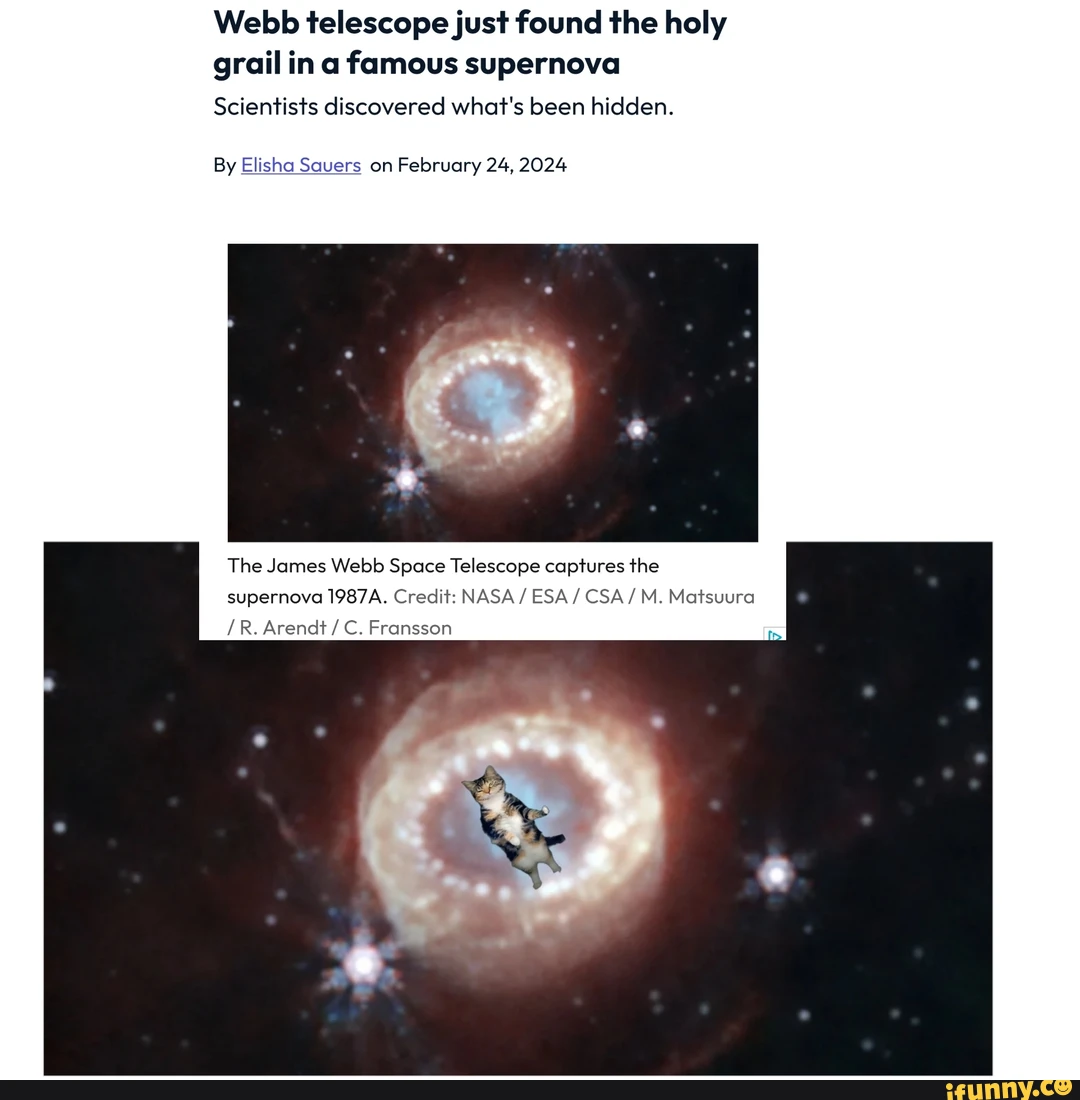At long last scientists believe they have the answer to what happened to a star that died in a famous supernova explosion not far from home.
The James Webb Space Telescope detected strong evidence supporting the existence of a neutron star, one of the densest objects in space, in its infancy. While some supernovas result in a new black hole, others create neutron stars when the core of a massive star collapses.
Though astronomers have known about neutron stars for decades, no one had actually seen one of these objects being formed before. The hunt for a neutron star within this close supernova remnant has been regarded as a holy grail quest.
"With this observatory, we have now found direct evidence for emission triggered by the newborn compact object, most likely a neutron star," said Claes Fransson of Stockholm University, the lead author of the study, in a statement released by NASA.
Scientists first saw this stellar explosion — dubbed SN 1987A — with the naked eye nearly 40 years ago in the Large Magellanic Cloud, a small satellite galaxy of the Milky Way about 160,000 light-years away. Since then, they've investigated it at radio, gamma-ray, and X-ray wavelengths — searching for clues among the ashes for what came of the deceased star.
But supernovas, by their very nature, churn out a lot of dust, clouding the view. Stars on the verge of dying and supernovas are element factories: They make carbon, for instance, the same chemical on which humans and much of life on Earth are based. Then they spread elements like calcium found in bones and iron in blood across interstellar space.
This dispersal seeds new generations of stars and planets, but scientists admit they have much to learn about the early stages of the process.
 The James Webb Space Telescope has observed the best evidence yet for emissions from a neutron star in supernova remnant SN 1987A. Credit: NASA / ESA / CSA / STScI / Claes Fransson / Mikako Matsuura / M. Barlow / Patrick Kavanagh / Josefin Larsson
The James Webb Space Telescope has observed the best evidence yet for emissions from a neutron star in supernova remnant SN 1987A. Credit: NASA / ESA / CSA / STScI / Claes Fransson / Mikako Matsuura / M. Barlow / Patrick Kavanagh / Josefin Larsson
Webb, the leading infrared telescope, was finally able to "see" what other telescopes couldn't in the aftermath. The new study, published this week in the journal Science, found evidence of heavily ionized argon (meaning argon atoms that had become electrically charged) in the center of the exploded material. Researchers think the most likely explanation for the changed argon is ionizing radiation from a neutron star.
"To create these ions that we observed in the ejecta, it was clear that there had to be a source of high-energy radiation in the center of the SN 1987A remnant," Fransson said in a statement. "Only a few scenarios are likely, and all of these involve a newly born neutron star."
Solving this mystery may help scientists better understand how stellar corpses evolve over time.


